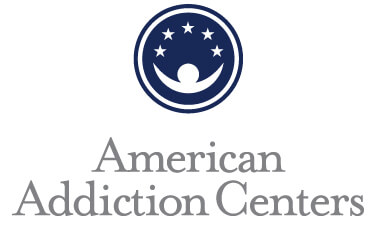The Science Behind the 2030 Vision for AAC and How it Will Revolutionize the Treatment of Addiction

In early May, Michael Cartwright, the CEO of American Addiction Centers (NYSE: AAC), outlined his 2030 vision for the company. At the core of the vision is a scientific approach to take personalized medicine to a new level. Utilizing pharmacogenetics, brain imaging, nutraceuticals and advanced technology, Cartwright believes investing in the latest sciences gives patients struggling with drug and alcohol addiction the best possible outcomes.
“Addiction treatment lags behind many other areas of medicine when it comes to research and innovation,” says Cartwright. “This is one of the main reasons why we decided to go public in order to have access to capital to invest in revolutionizing the treatment of this disease.”
Dr. Mark Calarco, AAC’s national medical director for clinical diagnostics and the CEO of Addiction Labs, worked alongside Cartwright in developing the plan. He has nearly 30 years of experience in both clinical and laboratory medicine.
Calarco explains the science behind the core elements of AAC’s 2030 plan. He stresses that the strategies highlighted in the 2030 plan aim to reduce the “trial and error” approach and cognitive bias so prevalent in medicine today.
- Focusing on Pharmacogenetics – “Pharmacogenetics testing gives us the ability to tailor medication choices to each patient’s unique DNA, which is particularly important in a recovery setting when there is a narrow window of time to effectively treat the patient,” says Calarco. “We get two key bits of information from this testing – how the patient metabolizes different drugs and if he/she has certain genetic traits that put them at risk for addiction or a mental health condition, such as depression or bipolar disorder. While this is still an emerging field, it is one of many clinically valuable tools that can help us to truly offer personalized medicine.”
- Implementing Brain Scans – “PET and SPECT scans are FDA-approved for psychiatric indications and mental health, and have a high predictive value, yet most treatment providers aren’t utilizing the technology because it’s not mainstream or covered by most insurers,” says Calarco. “These scans can be used to monitor functional activity in the brain and match patterns that correlate with addiction and behavioral health disorders. They can also help identify other brain disorders like dementia and Alzheimer’s.”
To better understand the potential impact of brain scans, Calarco points to a recent study featured in HealthDay where scientists were able to identify people with PTSD who were on the brink of suicide based on chemical changes in the brain.
- Expanding Access to Nutraceuticals – “Nutraceuticals can serve as an adjunct or even a primary treatment option for some patients, offering a lower risk for side effects with better overall compliance,” says Calarco. “For example, high doses of Omega-3 can lower inflammation, and vitamins B6, B9, and B-12 can lower the inflammatory amino acid homocysteine. We know that high inflammation levels can interact with our genes and immune system and cause abnormal shifts in mood and behavior. In fact, more and more research is supporting the benefits of nutraceuticals for their ability to reduce inflammation and increase dopamine and serotonin levels. One study in the American Journal of Psychiatry found several nutraceuticals helped to reduce depressive symptoms when taken as an adjunct with antidepressants. We are continuing to explore all the benefits of nutraceuticals for treating those with addiction and co-occurring mental health conditions and plan to offer them as an additional service through AAC.”
- Investing in Medical Technology – “The medications we use to treat addiction and behavioral disorders have a 30 to 40% failure rate, meaning people don’t always respond to them,” says Calarco. “This is why our plan also includes investing in non-invasive FDA-approved medical technologies, such as TMS (Transcranial Magnetic Stimulation) and Bridge-like medical devices. TMS uses magnetic fields to stimulate nerve cells in the brain to improve symptoms of depression, whereas the Bridge-like device can help reduce opioid withdrawal symptoms and chronic pain. We also plan to develop an app to make addiction resources more accessible and convenient to our patients and the general public from their phones, and allow us to connect in a new way to those who need ongoing support in achieving long-term recovery.”
Calarco is excited about AAC’s future but doesn’t expect everyone to buy into AAC’s vision at first. In fact, he says that’s a sign AAC is on the right track.
“When things are cutting edge or innovative people often have a hard time getting on board until it’s mainstream,” he says. “With tens of thousands of people dying every year from this disease, we don’t have time to wait on them. We must continue to forge ahead and be the leader in the industry.”